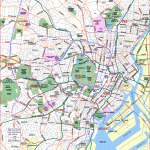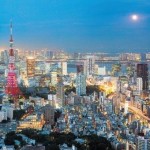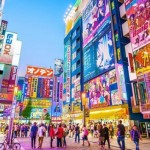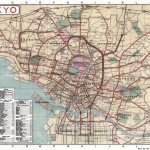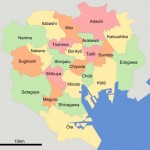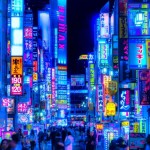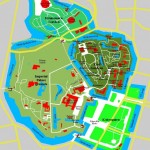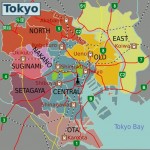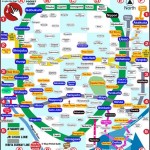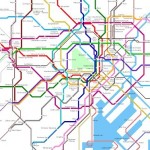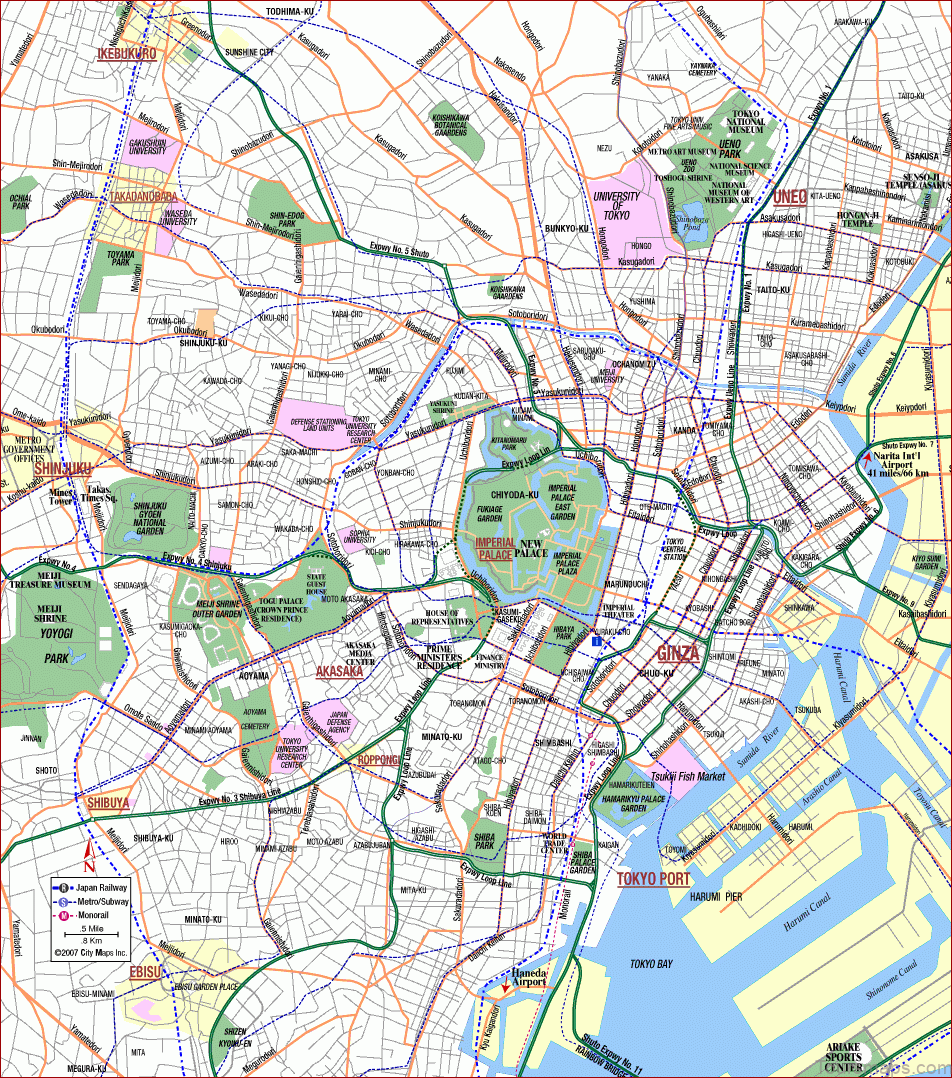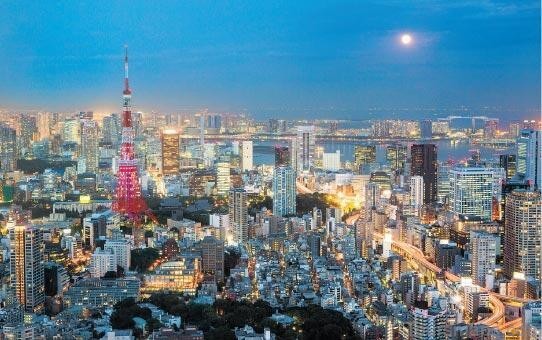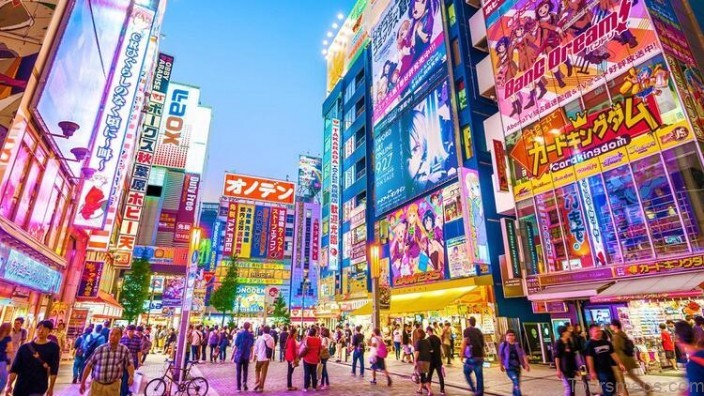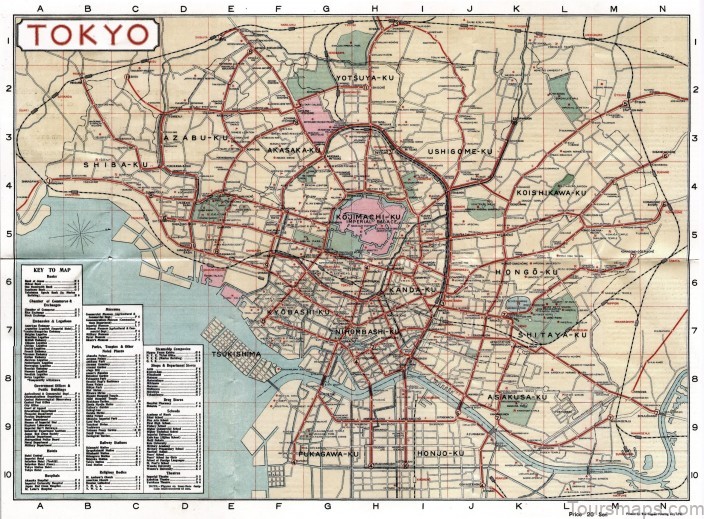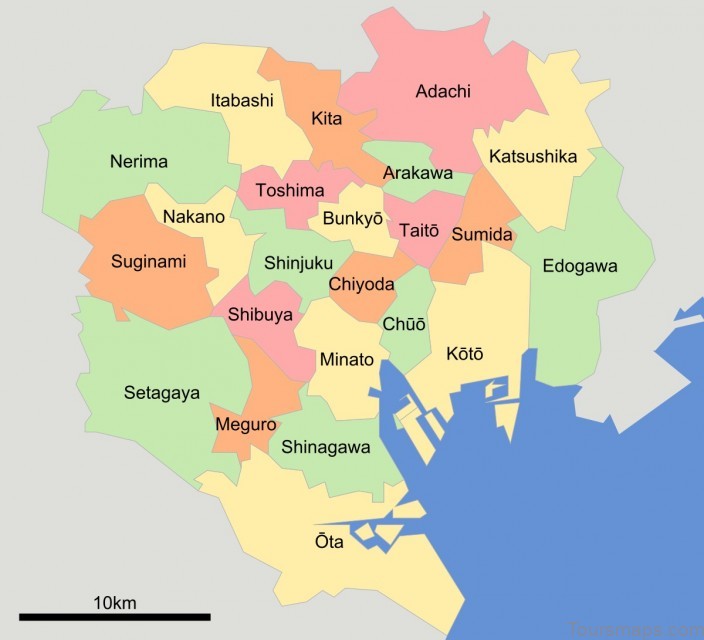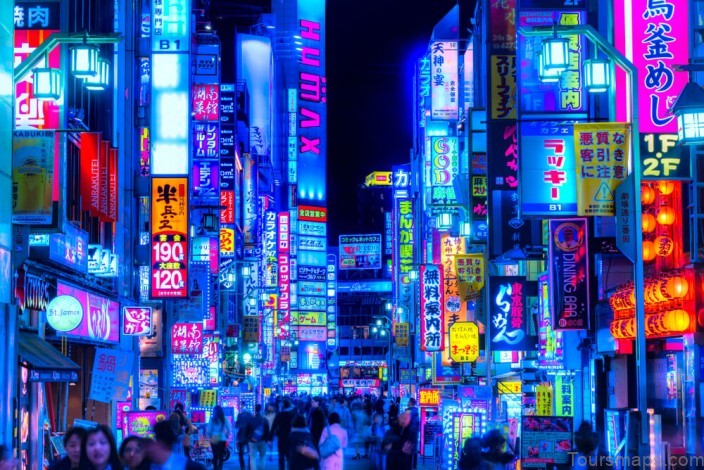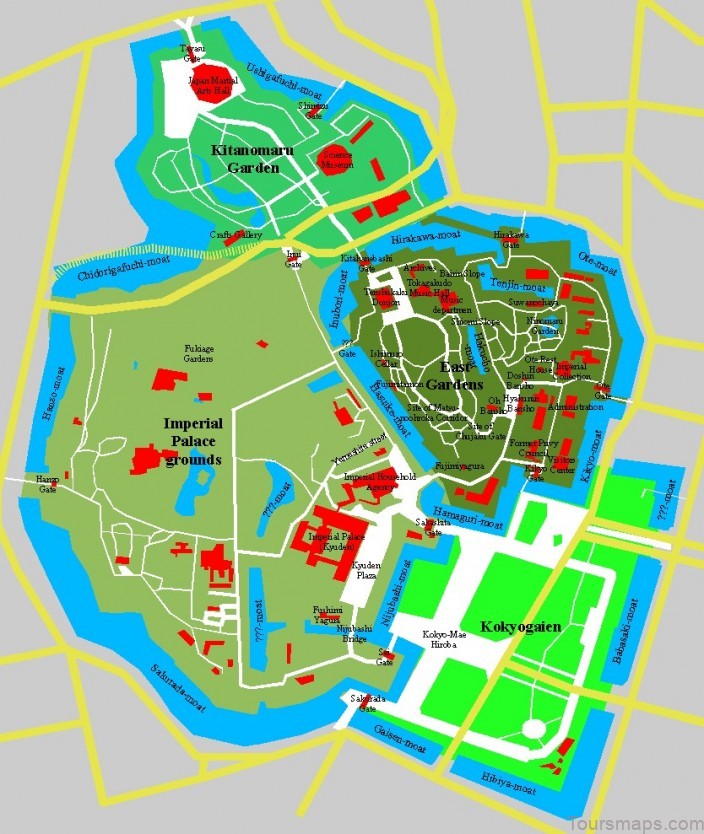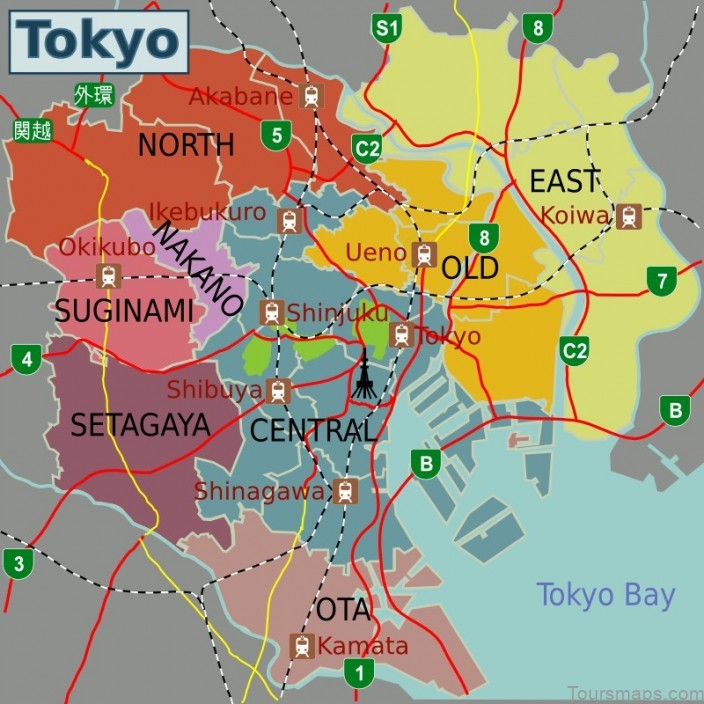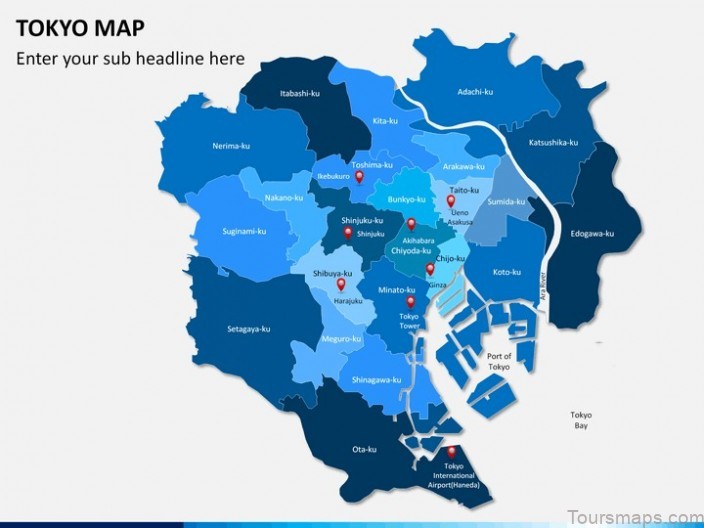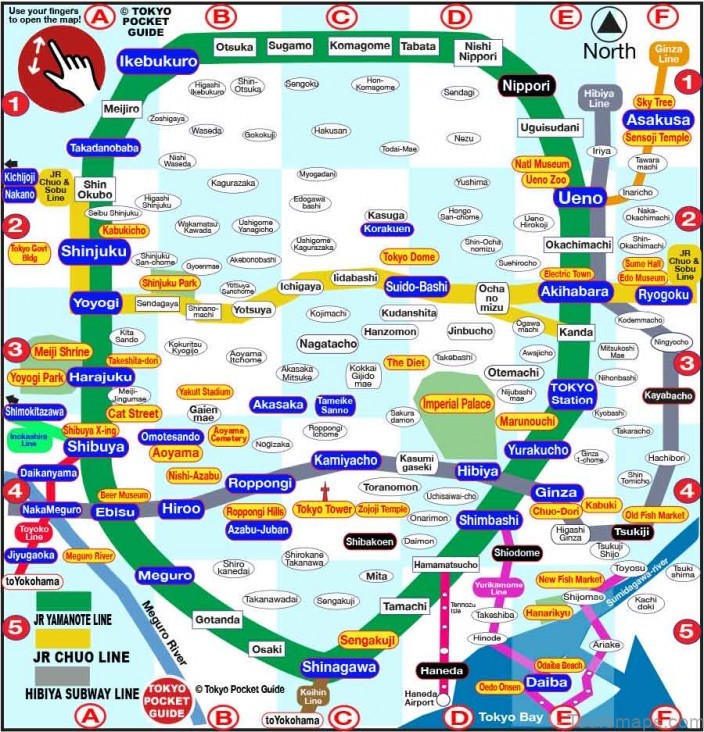A City of Infinite Possibilities
An alien spacecraft entering our orbit at twilight in search of a suitable landing strip, would find in central Tokyo’s motherboard of neon, of structures soaked in polychromatic electronic surges, the most intense nocturnal illumination on the planet. For a country the Japanese fondly like to think of as small, Japan boasts a surprising number of superlatives, among them Tokyo, the world’s largest metropolis. The city’s growth is an astonishing story given that in the late 16th century it was little more than an impoverished fishing village occupying a stretch of pestilential marshland. The rise of Edo, as Tokyo was then called, was rapid, as it became not only the military and mercantile powerhouse of the country, but also its de facto capital.
Tokyo Tourist Map in English
Tokyo Map – Tokyo City Guide Photo Gallery
Almost 250 years of relative isolation from the outside world may have deprived Japan of the technological advances being made in Western countries, but its intense introspection created the conditions for an extraordinary efflorescence of domestic culture, driven largely by townspeople. Many aspects of today’s highly visual culture, found in forms like anime, manga, painting, and the performing arts, date from this era. Enthralled by its own hyperbole, by a delirious, super-inflated confidence, a belief in impregnable economic institutions and practices, the implosion of the bubble economy dispelled most of the euphoria associated with the heady days of the 1980s. But Tokyo is once again the stage for a rejuvenation, spurred by a new generation of artists, writers, art dissidents, creative entrepreneurs, malcontents, and contrarians.
Your Tokyo Travel Guide
Many observers are calling today’s fascination with the country the third wave of Japanophilia, the first occurring in the 18th and 19th centuries with the discovery of Japanese arts and aesthetics. The second, less publicized wave took place in the 1950s and 1960s with the translation of many works of modern Japanese literatüre. The current phenomenon, driven by TV, film, the Net, and a fascination with popular culture, is manifest in everything from experimental architecture, maid cafes, cosplay, anime and manga characters, lurid arcade art, rock bands like Babymetal, and occasional performances by Hatsune Miku, a digitally created singer. Tokyo, one of the world’s great fashion capitals, is the epicenter of this effulgent culture.
It is also one of the best cities in the world to eat, shop, and sightsee. British food writer Michael Booth has gone on record saying, “Japan is the greatest food nation on earth, inhabited by the most discerning eaters, and with the most advanced restaurant culture in the world.” Improvised jazz for a steamy summer afternoon along the Sumida River. Elders resting up at the Gion Matsuri, an annual festival connected to Narita Temple.
Visit Tokyo
The narrow back alleys of older quarters are a tangle of homes fronted by potted blooms, vegetable planters, and creepers. Pleasure palace then, or urban dystopia? Historically, Tokyo has been both. Its response to natural and man-made catastrophes has always been to rebuild. Ultimately, your judgment of the city will depend on whether you view it as a model of thrilling unorthodoxy or an example of how unchecked development can metastasize into urban eyesore. To be sure, not everyone has been entranced by the city. Australian journalist Hal Porter wrote in 1967 that “Tokyo is an allegory to warn, a horrifying and bloated City of Dreadful Day where post-1984 robotics and the superstitions of prehistoric animism are inextricably braided together, an abnormal metropolis, feverish and discordant, hysterical, hybrid and chaotic.”
The Ultimate Travel Guide to Tokyo
A later writer, Paul Theroux, concluded, “The gray sprawl of Tokyo was an intimidating version of the future, not yours and mine, but our children’s.” A darkened room illuminated with artist Kusama Yayoi’s iconic pumpkins. Tokyo embodies, perhaps more so than any other city on earth, the message that all things pass, that permanence is a pretension. The process of emergence and extinction in the urban context is so rapid it barely registers in the mind. Tokyo today bears as little resemblance to Edo as the mega-skyscrapers of Dubai correspond to the crumbling sand medinas of the past. In its vision of urban planning, only smidgens of heritage are permitted to remain. One suspects that in an ideal world, the authorities might favor a totally modern, replaceable city, one with historical holograms inserted into its fabric. In the absence of a master plan, it is nevertheless possible in this most provisional, acquisitive, mind-challenging of capitals, to apprehend, as dusk falls over the city, neon lights piercing the darkness like phosphorescent meteors or waves of electric aurora, a fluid, transient beauty, in which an infinite number of alternative futures are possible.
Table of Contents
Maybe You Like Them Too
- Explore Southgate, Michigan with this detailed map
- Explore Les Accates, France with this Detailed Map
- Explore Góra Kalwaria, Poland with this detailed map
- Explore Gumdag, Turkmenistan with this detailed map
- Explore Telfes im Stubai, Austria with this detailed map

